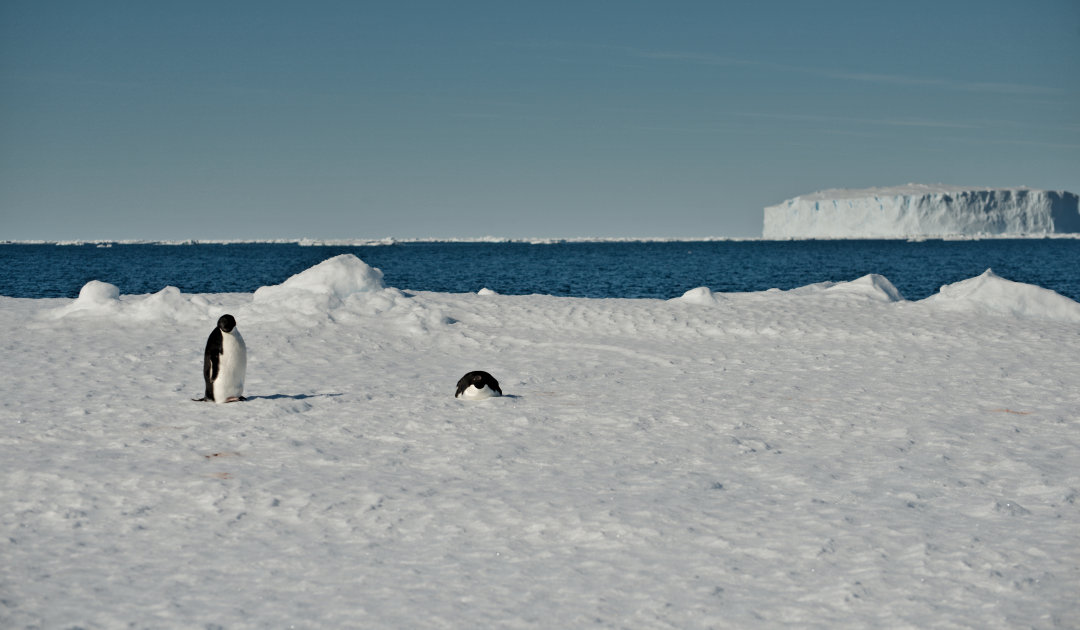Looking at the development of Antarctic sea ice over the whole year, it looks like Antarctica is a pulsating organism. Sea ice formation always follows the same pattern, quite independent of the effects of global warming. For a long time, various reasons were suspected why the melting proceeds much faster than the ice formation. A team of American researchers has now found out the real reason and is baffled by the simplicity of the answer.
The research team, led by Lettie Roach, a former postdoctoral researcher at the University of Washington, discovered that only the change in solar radiation over the year is responsible for the different rates of ice melt in the summer and ice formation starting in the fall. At the end of summer, when sea ice begins to slowly form at the edges of the coast, it usually takes around seven months for the ice cover to reach its maximum extent, but only just about five months to fall back to the minimum. “In spite of the puzzling longer-term trends and the large year-to-year variations in Antarctic sea ice, the seasonal cycle is really consistent, always showing this fast retreat relative to slow growth,” Dr Roach explains.
“I was surprised that the rapid seasonal retreat of Antarctic sea ice could be explained with such a simple mechanism.”
Dr Lettie Roach, Nasa
However, the results of the study now show that the answer is much simpler than previous theories suggest. The work has been published recently in the journal Nature Geoscience. In addition to Dr Roach, who now works at Nasa, the work also involved researchers from the Scripps Institute of Oceanography, the University of Wisconsin and the University of North Carolina.

The results of the study are startling. “I was surprised that the rapid seasonal retreat of Antarctic sea ice could be explained with such a simple mechanism,” Dr Roach says. Until now, scientists suspected that either so-called upwelling (water masses from the depths) and thus heat transported upward or shifts in the wind patterns blowing over the Southern Ocean were responsible for the uneven speed. But the team examined various global climate models, then adapted an energy balance model that combines sea ice and climate, and examined the various configurations that could be responsible for the asymmetry in sea ice cycles. It turned out that only the seasonal cycles of solar radiation can be considered as a reason. “Because insolation in southern high latitudes departs from a sinusoid by having a narrow peak of intense brightness in summer and a long period of low light in winter, there is rapid summer ice retreat and gradual winter ice advance,” the research team wrote in its paper.

The study now explains why Antarctic sea ice exhibits such a difference in the two processes of sea ice formation and melting. And this is important to develop better and more accurate predictions of sea ice development in Antarctica. But, as is so often the case in science, the work raises new questions. One of the most important and interesting might be why the Arctic does not show a similar pattern. There, the formation of sea ice is somewhat faster than the melting, although the difference is not as pronounced as in Antarctica. However, this suddenly makes Antarctic sea ice easier than Arctic sea ice, which is tantamount to a paradigm shift. Cecilia Bitz, a co-author of the study, says that the explanation of this key element of Antarctic sea ice formation has been wrong in textbooks so far and, at least in Antarctica, is much simpler than thought. “Our results show that the seasonal cycle in Antarctic sea ice can be explained using very simple physics. In terms of the seasonal cycle, Antarctic sea ice is behaving as we should expect, and it is the Arctic seasonal cycle that is more mysterious,” Dr Roach says. Getting to the bottom of this mystery is the research team’s next goal.
Dr Michael Wenger, PolarJournal
Link to the study: Roach et al. Asymmetry in the seasonal cycle of Antarctic sea ice driven by insolation. Nat. Geosci. (2022). https://doi.org/10.1038/s41561-022-00913-6
More on the subject:





